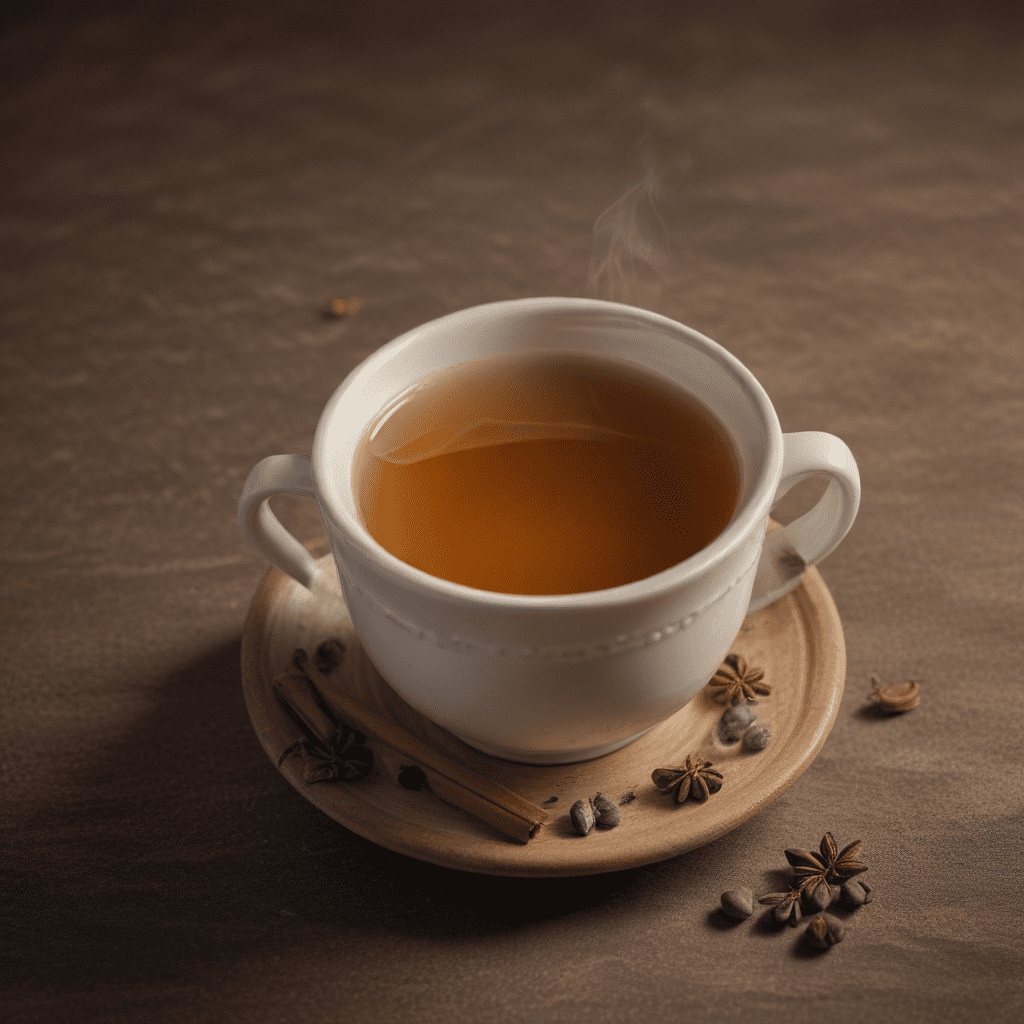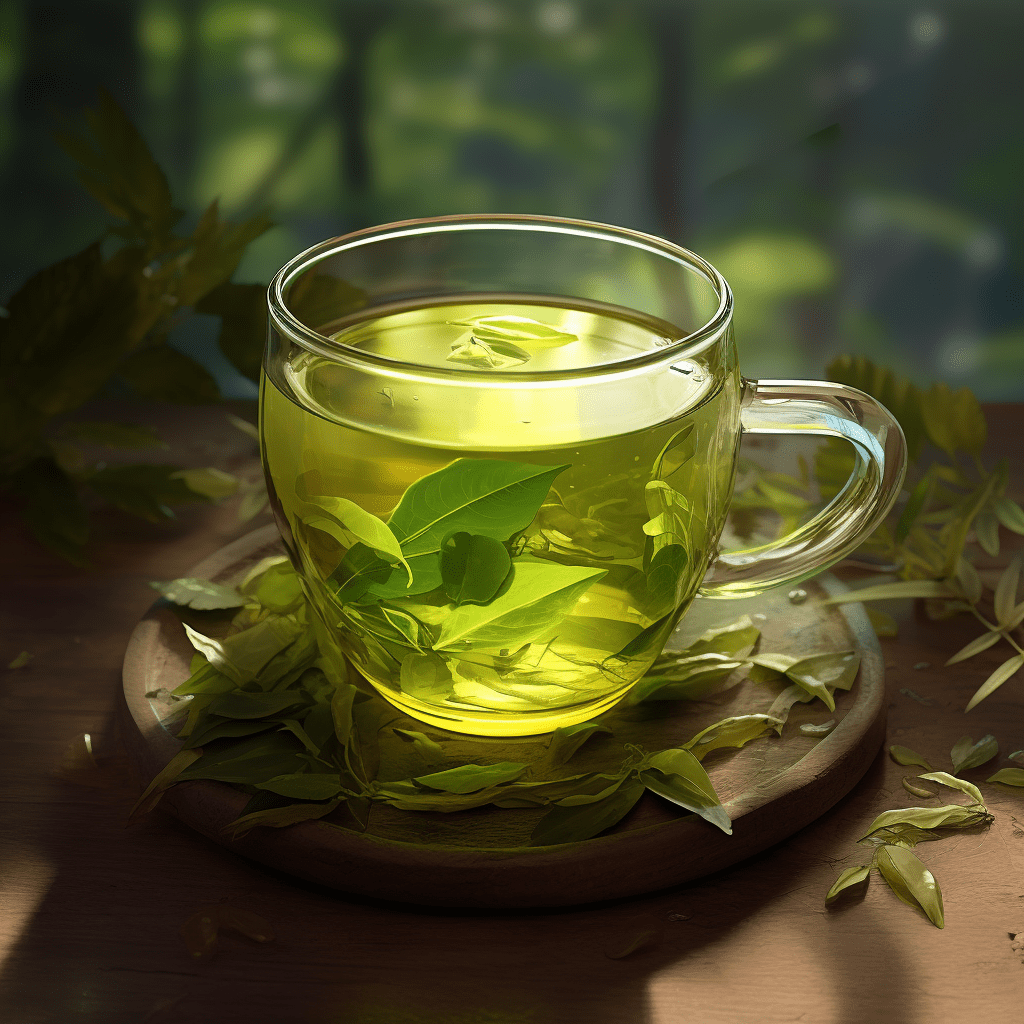
Aromatic Allure: Unveiling the Enchanting Essence of Chai
Chai tea, the aromatic elixir that has tantalized senses for centuries, holds a prominent place in the global tea lexicon. This captivating beverage, with its symphony of robust flavors and enticing aromas, has become an indispensable part of many cultures, transcending geographic boundaries to become a cherished companion worldwide.
The allure of chai lies in its inherent ability to stimulate both body and mind. Its distinctive blend of aromatic spices, carefully orchestrated to complement the rich flavors of black tea, creates a sensory experience that is both invigorating and comforting. The heady notes of cardamom, the warmth of cinnamon, the peppery kick of ginger, and the subtle sweetness of cloves combine to craft a captivating symphony of flavors that dance upon the palate.
Historical Roots: Tracing the Origins of Chai's Timeless Tradition
Chai's origins can be traced back to ancient India, where it was traditionally prepared in a clay pot known as a "kulhad." This humble vessel imparted an earthy flavor to the tea, further enhancing its allure. Over time, chai evolved from a medicinal concoction used for its therapeutic properties to a beloved beverage enjoyed throughout the day. Its popularity spread beyond India's borders, finding favor in neighboring countries and eventually making its way to the rest of the world.
Regional Variations: A Culinary Tapestry of Chai's Diverse Expressions
The beauty of chai lies in its versatility, which allows for countless regional variations. In India, where chai's roots are firmly planted, different regions boast their own unique takes on this beloved beverage. From the robust flavors of North Indian chai, with its generous use of spices, to the more delicate nuances of South Indian chai, with its subtle blend of cardamom and ginger, each variation offers a distinct interpretation of this aromatic elixir.
Chai's Therapeutic Touch: Unveiling its Medicinal Properties
Beyond its sensory delights, chai is also renowned for its therapeutic properties. Traditional Ayurvedic medicine has long revered chai for its healing qualities, utilizing it to alleviate a wide range of ailments. The spices in chai, such as ginger, cinnamon, and cloves, possess anti-inflammatory, antioxidant, and anti-bacterial properties. Chai has been used to soothe sore throats, aid digestion, and alleviate headaches, making it a true medicinal treasure.
Blending Artisanship: The Alchemy of Creating the Perfect Chai
Crafting the perfect chai is an art form that requires a delicate balance of spices and tea. The traditional method involves simmering black tea with a blend of ground spices, allowing the flavors to meld and deepen. The proportions of each spice can be adjusted to suit individual preferences, creating a bespoke chai experience. Whether using whole spices or pre-ground blends, the art of blending lies in achieving a harmonious equilibrium that allows each ingredient to shine while complementing the others.
Perfect Preparation: Mastering the Art of Brewing Chai
Brewing chai is a ritual that requires patience and attention to detail. The traditional method involves simmering black tea with the desired blend of spices in a pot of water or milk. The tea is brought to a boil, then reduced to a simmer and allowed to steep for 10-15 minutes. The longer the steeping time, the more intense the flavor will be. Once steeped, the chai is strained into cups and sweetened to taste with sugar or honey.
Culinary Inspirations: Chai as a Versatile Ingredient in Culinary Creations
Chai's versatility extends beyond the cup, making it a delightful addition to various culinary creations. Its aromatic blend of spices adds a warm and inviting flavor to baked goods, desserts, and savory dishes. From chai-spiced cookies and muffins to chai-infused ice cream and panna cotta, the possibilities are endless. Chai's unique flavor profile also complements meat dishes, marinades, and sauces, adding a touch of exotic intrigue to everyday meals.
Chai's Sensory Symphony: Exploring its Aromatic and Flavorful Delights
Chai's sensory experience is a symphony of aromas and flavors that captivates the senses. The heady fragrance of cardamom mingles with the warmth of cinnamon, the peppery bite of ginger, and the subtle sweetness of cloves. These aromatic notes dance upon the palate, creating a complex and alluring taste that lingers long after the last sip. Chai's versatility allows for endless variations, enabling tea enthusiasts to tailor their experience to suit their individual preferences.
Modern Interpretations: Innovative Approaches to Reinventing Chai
In recent years, chai has experienced a resurgence in popularity, inspiring a wave of innovative interpretations. From cold-brewed chai to chai lattes and chai cocktails, modern mixologists and culinary artists are reimagining chai in exciting and unexpected ways. These contemporary approaches preserve chai's traditional essence while infusing it with new flavors and textures, catering to the evolving tastes of a discerning clientele.
Chai Tea: A Legacy of Warmth, Comfort, and Sensory Indulgence
Chai tea has woven its way into the fabric of global culture, becoming a symbol of warmth, comfort, and sensory indulgence. Its aromatic allure, therapeutic properties, and culinary versatility have made it a beloved beverage enjoyed by people from all walks of life. Whether savored in its traditional form or reimagined through modern interpretations, chai continues to captivate the senses and enchant the soul.
FAQs
1. What are the main spices used in chai?
- Cardamom, cinnamon, ginger, and cloves
2. What is the traditional method of brewing chai?
- Simmer black tea with spices in a pot of water or milk for 10-15 minutes.
3. Can chai be made with different types of tea?
- Yes, chai can be made with black tea, green tea, or herbal tea.
4. How can I adjust the flavor of chai?
- Experiment with different proportions of spices or add sweeteners like sugar or honey.
5. What are some culinary uses for chai?
- Chai can be used in baked goods, desserts, savory dishes, marinades, and sauces.
